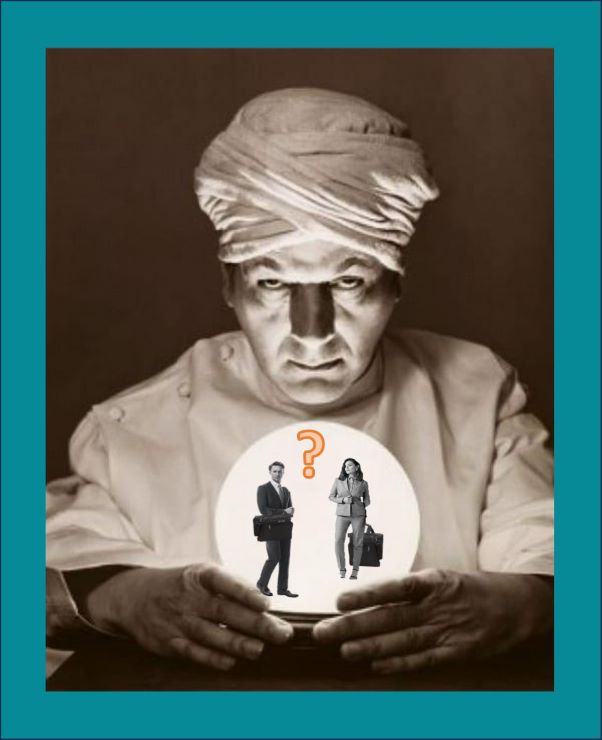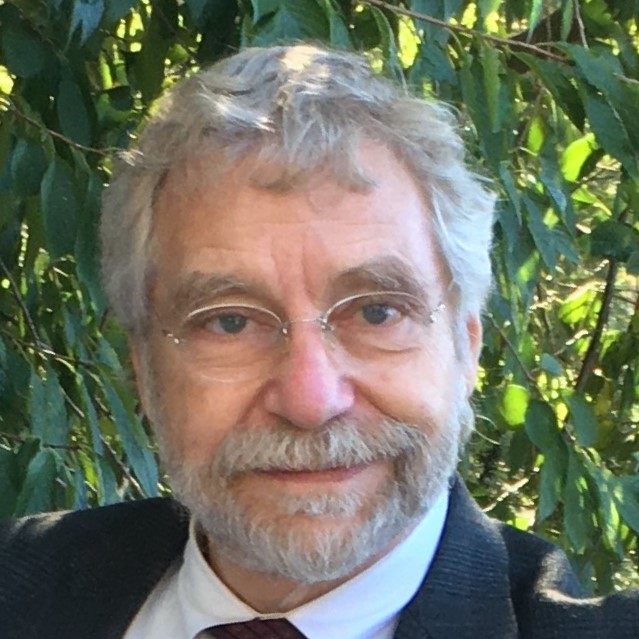Consulting, a good start.
Consulting is an early career choice that allows smart, resourceful people who have mastered sounding confident to find responsibility beyond that available in other industries. Consulting firms recruit from top undergraduate universities, business schools, and other graduate institutions, looking for “smart, nice, analysts with legs.”
Firms want smart, analytical people because client problems are challenging. They want nice people because no one wants to work with jerks. And they want people “with legs,” who before they walk, figuring out problems above their training and pay grade. They hire people with amazing potential, who rise to management more quickly than most.
Consultancies know how to find such people. Case interviews demonstrate thinking ability. Multiple interviews with people at various levels determine “fit,” code for “nice.” Questions about failure demonstrate speed-learning. and uncover the most important qualification of new consultants, insecurity. Firms want people who can sound confident, but nurse imposter syndrome, thinking that their achievements are less than others believe.
Consulting firms hire insecure analysts because they work harder.
Some candidates seek these high starting salary jobs to pay off student loans, or just as a good start to a business career. Even if you wash out, a consulting firm is “a good place to be from,” and many of the larger firms outplace alumni with good companies.
But is consulting a career “with legs, i.e., one with a long life cycle?
Trajectory of a consulting career
Consultants move through distinct phases:
Newbie—–Yeoman———-Old Hand
Newbies do the work. Yeomen do the work and manage people, clients and project deliverables. Old Hands do some work, manage people (selection, promotion and mentoring), manage client relationships, and acquire new client relationships (i.e., “sell,” though very few consultants like that word).
The job changes radically between levels. Many firms, certainly the larger ones, have rigid promotion/deselection decision points in a consultant’s career. This was called “Up or Out,” but has been softened to “Grow or Go.” Newbies who can’t perform or don’t want to manage leave the firm. Yeomen who don’t learn to sell leave the firm. Of course there are exceptions. If everybody “really likes” you and you do great work at your level, you may stay, but pay raises slow and the cohort you were hired with leaves or is promoted.
Many people leave consulting for careers in industry, or academia or non-profit services. Some leave big firms for smaller firms or become independents to maintain the “everybody does everything, all the time” feel. Some suddenly find themselves at the Yeoman to Old Hand transition unprepared. They haven’t thought about the role and how to excel at it.
This post is to help junior consultants plan to be Old Hands.
Different Old Hand jobs
When I was a young consultant, I aggressively rejected planning for anything with the word “Old” in the title. “Hope I die before I get old,” sang Pete Townsend in The Who’s song “My Generation.” So to be clear, an Old Hand might be twenty-eight years-old, or even younger, if you are tall, have some gray hair, and a “presence” that people describe with words like “gravitas.”
Remember an Old Hand’s primary job is to feed the firm, attract new clients, or sell. To be safe, avoid the word “sell” and use phrases like “build new clients relationships,” or “begin service to clients.” Also some Old Hands are offended by the suggestion that they don’t do work or manage. Of course they do, but new client acquisition is critical. There is always some work ending that must be replaced for the growth and health of the firm.
In my experience there are three Old Hand client acquisition roles:
- Business Development Executive (BDE). This is a direct sales role, the classic “rainmaker” of professional services.. The Old Hand who fills it may have come up through the firm’s ranks or may be an experienced business to business sales person with a track record big ticket sales. The BDE is exceptionally good at listening to a problem description and framing a consulting project that might solve the problem.
- Thought Leader (TL) This role includes research either by the firm or an academic partner. TL’s research becomes a service offering. Years ago Jon Katzenbach of McKinsey uniquely reconceptualized teams as performance units and Frederick Reichheld correlated customer recommendations to loyalty. Thought leaders attract new clients by writing, publishing and speaking about their innovations.
- Trusted Advisor (TA) This role is an expert or coach role for people who buy consulting services. The TA may have come up through the firm. The may have retired and sit on boards of companies or teach at a University, but clients and colleagues seek them out. They listen and recommend new work for the firm.
A BDE acquires clients through a sales calling process. A TL acquires clients through applied expertise. A TA acquires clients through a long term relationship. Any Old Hand’s job may include one of these roles or all three depending on the capability of the Old Hand.
Growing into these roles involves planned capability development.
What is a capability?
First, some definitions:
- Skills are physical or mental actions or processes that get better with practice and can be applied to a problem.
- Knowledge is information that can be applied to a problem either as background or specific problem related expertise.
- Competency is a combination of knowledge and skill that has been learned and successfully applied to a problem.
- Capability is a competency, reinforced by individual or group processes, used repeatedly such that a person is “known for it”
To build capabilities involves learning new knowledge, practicing skills, applying these competencies to problems enough to have consistent success at them.
Old Hand role capabilities
Here are three capabilities of the Old Hand role:
- Framing a project. – Client’s hire consultants to solve a problem they can’t solve themselves.
- Grow or stop decline of revenue,
- Grow of arrest the decline of profit, or
- A “people problem.”
(All business problems are people problems and all problems have revenue or profit implications. Are we hiring, keeping the right employees, suppliers to deliver for customers and shareholders? Are people organized well with sound work processes for efficiency [profit] or effectiveness [revenue]?)
Framing a project means learning enough to form a hypothesis about what might be causing the problem and what the solution might be. The diagnosis phase will confirm or disprove your hypothesis, but you frame diagnosis work. The client may tell you what they think the solution is, but you must cast the diagnosis wide enough to confirm or deny these hypotheses.
- Adaptability and Innovation – Observe a “new” problem, that many clients have – “Teams, hmmm -people seen to be crowing or complaining about teams, I wonder . . . “ –then conduct research, develop a service offering, adapt it to multiple clients. This becomes a way to feed the firm
- Building long term relationships -This capability involves seeing potential in clients or colleagues and being extraordinarily helpful when asked. Perhaps you can be helpful to everyone, but most Old Hand Trusted Advisors are extraordinarily selective about with whom they connect. “Choose wisely and five clients can feed your firm for your lifetime, “ an Old Hand at a well-known boutique firm once told me.
Old Hands need all these capabilities. However, Business Development Executives make Framing their first priority. Thought Leaders make Innovation their first priority. Those who choose the Trusted Advisor path focus on Relationships.
BDEs may also build knowledge in an industry to give them access. TL’s make build connections with researchers and business professors, Trusted Advisors may build relationships at the Board of Director level.
Planning which capabilities to develop and when increases Old Hand career longevity.
How long can an Old Hand work?
How long one expects a career to last is something few think about before fifty and in consulting that may be too late. When I was twenty I imagined I’d retire at fifty; I worked till I was seventy. I might have worked longer, I still look young for my age. However my business came from referrals. Existing clients referred me to their peers and I got to the point where my clients retired and some died. What might have changed this?
Focus on getting clients younger than you are.
- Most consultants start out working for older clients, but if over time they cultivate relationships with supporting managers then as senior client retire they will be in good position. Trusted Advisors are often quite good at seeing potential in younger managers or board members and extend the period that they are helping companies.
Thought Leaders can have greater longevity.
- Consultants that work into their nineties, Drucker, Deming, Schein, are almost always thought leaders who have published best-selling or multiple books. These works, enhanced by new editions, seminars, and speeches, are an evergreen source of new clients. Often thought leaders develop a “Center” or an “Institute,” to continue their research with younger staff that extends and markets the content of the Center.
Form Partnerships
- Hiring public relations, speakers agents, telemarketing providers or training Yeoman project managers and others at your firm can keep an Old Hand contributing longer..
Consulting doesn’t have to be a young person’s game.
With a little late stage career planning Old Hands can work as long as they want to work. Of course, there is more to life than work and some other activities are more fun and rewarding.






0 Comments